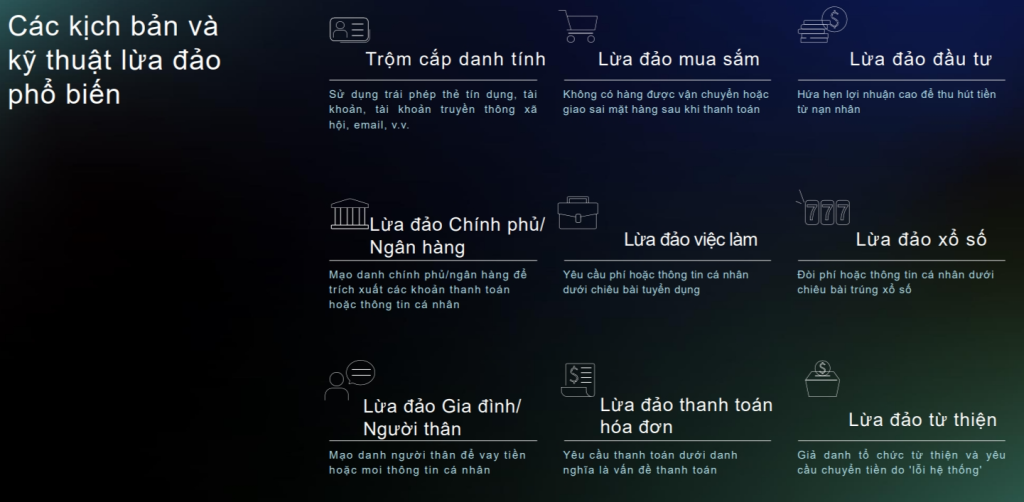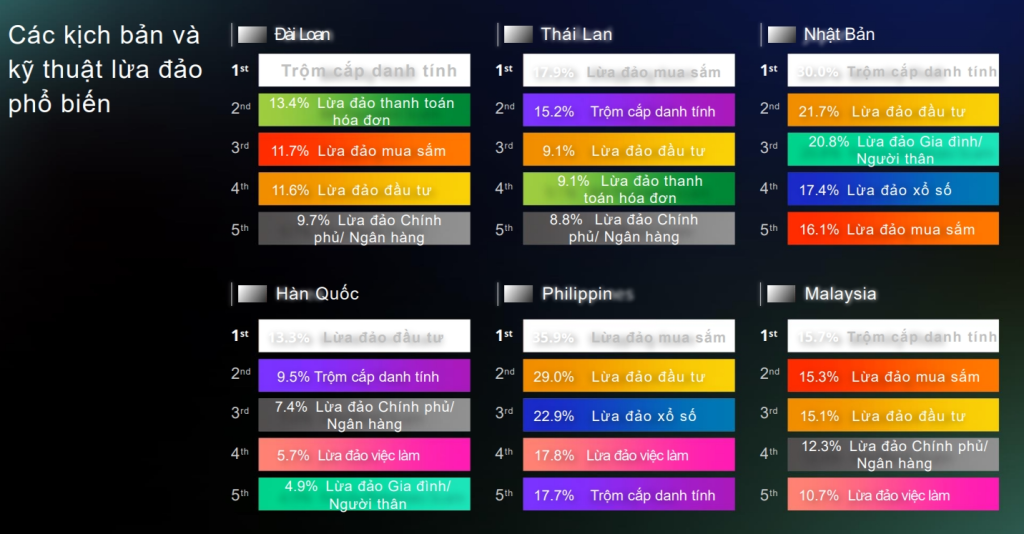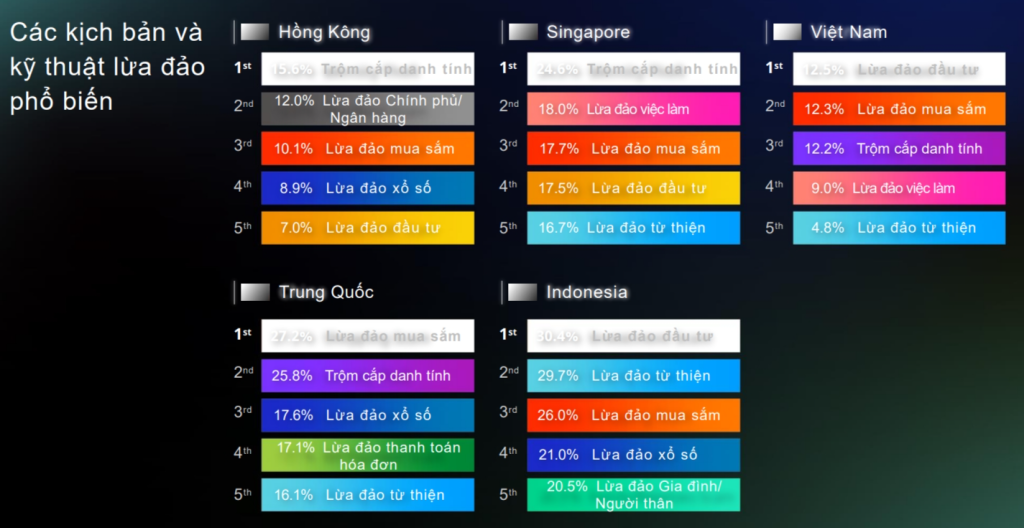
Scripts and techniques play an important role in determining the success or failure of a scam. In the survey for Asia 2023 scam report, GASA and Gogolook conducted a survey of “common phishing scenarios and techniques” used in 11 countries in the Asian region. Let's Anti-Phishing (CLD) learn more about this study in more detail.
Despite the rapid development of new phishing technologies and tools and the emergence of a global division of labor, we can still see that phishing scenarios and methods must be “ localized”, working closely with local politics, public sentiment, language and the times.

To help governments, organizations and businesses develop prevention methods and raise awareness, GASA and Gogolook have listed common fraud scenarios and methods such as identity theft/fraud, phishing shopping scams, investment scams, government/bank impersonation, employment scams, lottery scams, friend and family scams, bill payment scams and charity scams. The report ranks scams based on the prevalence of incidents people have experienced over the past year, providing insight into the nuances of scam situations across other regions each other of Asia.

Identity theft/fraud is the most common type of fraud in Taiwan, Japan, Malaysia, Hong Kong and Singapore. In Taiwan, the most common fraud methods include bill payment fraud, shopping fraud, investment fraud, and impersonation of government/bank officials.
According to Taiwan's Criminal Investigation Bureau, although investment scams ranked fourth, they accounted for 47% in fraud-related financial losses last year, indicating a significant average financial loss in this context . In Japan, third place goes to “friends and relatives scams,” in which fraudsters pose as family members, demanding temporary loans, collateral or ransom. This is due to the increased susceptibility of older people in Japan's aging society, making it easier for scammers to target them. In the future, it will be more difficult for people to distinguish the authenticity of incidents due to the development of artificial intelligence and deepfake technology.

With the growing popularity of online shopping, shopping scams predominate in Thailand, the Philippines and China, making it the most serious type of scam. The growing trend of “charity scams” involves impersonating nonprofit organizations and defrauding people using excuses such as insufficient donation amounts or incorrect payment procedures. This form of fraud has spread to Indonesia (29.7%), Singapore (16.7%) and China (16.1%).

